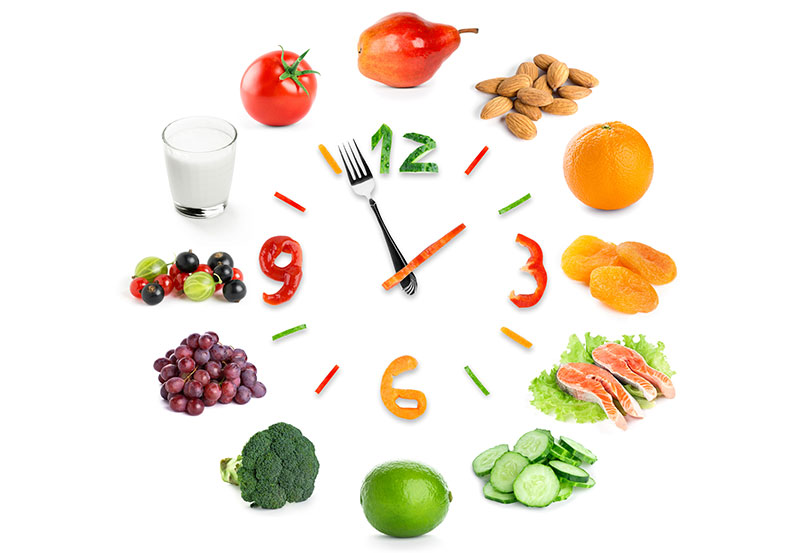
Pleasant Mealtimes
Mealtime should be enjoyable, not a power struggle. This may seem impossible, but you can do it! Providing healthy foods, positive role modeling, and routines while trusting the child to eat the right amounts will help to create a pleasant mealtime and a positive relationship with food.
Get Parents Involved
Inform families about positive eating environments to help provide consistency at home. You can send “badges” home to alert families about a child’s daily activities. Get badges to cut out and modify on page 2 of Tips for a “Choosy” Eater or on page 8 of Mealtimes With Toddlers in the CACFP.
Here are other resources to share with families:

Mealtime Discussion Prompts
During mealtime, spark positive conversations with children using the questions below.
- What new foods have you tried recently? Have you tried any new foods at home?
- What new foods are you trying today? Are other children trying new foods? If so, provide encouragement and praise.
- What new food would you be willing to try in the future?
- What letter of the alphabet does this food start with?
- What shape is our pasta? What color is this pepper?
- What does the mango make you think of?
- Can anyone add a color of the rainbow onto their plate?

Menu Ideas
The following menu ideas provide a variety of foods, colors, and textures that can spark conversations with children during mealtimes. Some recipes contain multiple food components listed in parentheses after the recipe

You can find the featured Menu Ideas recipes in the resources below:
- The Child Nutrition Recipe Box has USDA standardized recipes for child care centers and family child care homes.
- The Child Nutrition Recipe Box: New CACFP Lunch/Supper Recipes has standardized recipes per age group (3–5 years old and 6–18 years old) and for servings of 6, 25, and 50.
References
Academy of Nutrition and Dietetics. (2021, January 18). 8 ways to get picky eaters to become more adventurous. Kids Eat Right. https://www.eatright.org/food/nutrition/healthy-eating/8-ways-to-get-picky-eaters-to-become-more-adventurous
American Academy of Pediatrics. (2012, January 5). Tips for preventing food hassles. https://www.healthychildren.org/English/healthy-living/nutrition/Pages/Tips-for-Preventing-Food-Hassles.aspx
American Academy of Pediatrics. (2018, April 26). 10 tips for parents of picky eaters. https://www.healthychildren.org/English/ages-stages/toddler/nutrition/Pages/Picky-Eaters.aspx
Ellyn Satter Institute. (n.d.). The picky eater. Childhood Feeding Problems and Solutions. https://www.ellynsatterinstitute.org/how-to-feed/childhood-feeding-problems/#the-picky-eater
Institute of Child Nutrition. (n.d.). Baked tofu bites for ages 3–5. Child Nutrition Recipe Box. Baked Tofu https://theicn.org/cnrb/ages-3-5/age-3-5-6-serving/baked-tofu-bites-for-ages-3-5/
Institute of Child Nutrition. (n.d.). Child nutrition recipe box. https://theicn.org/cnrb/
Institute of Child Nutrition. (n.d.). Maple baked French toast squares – USDA recipe for child care centers. Child Nutrition Recipe Box. https://theicn.org/cnrb/recipes-for-centers-breakfast/maple-baked-french-toast-squares-usda-recipe-for-child-care-centers/
Institute of Child Nutrition. (n.d.). New CACFP lunch/supper recipes. Child Nutrition Recipe Box. https://theicn.org/cnrb/2022-cacfp-recipes/
Institute of Child Nutrition. (n.d.). Zucchini sticks with red sauce – USDA recipe for child care centers. Child Nutrition Recipe Box. https://theicn.org/cnrb/recipes-for-centers-side-dish/zucchini-sticks-with-red-sauce-usda-recipe-for-cacfp/
Nemours. Kids Health. (n.d.). Handling picky eating in toddlers. https://kidshealth.org/en/parents/pickyeatingtoddlers-video.html#cathealthy-eating
U.S. Department of Agriculture, Food and Nutrition Service. (2018, September 13). Nibbles for health: Nutrition newsletters for parents of young children. https://www.fns.usda.gov/tn/nibbles
U.S. Department of Agriculture, Food and Nutrition Service. (2018, September 13). Nibbles for health: Tips for a “choosy” eater. https://www.fns.usda.gov/sites/default/files/resource-files/NibblesChoosyEater_Eng.pdf
U.S. Department of Agriculture, Food and Nutrition Service. (2020, December 17). Encourage children to try new foods. https://www.fns.usda.gov/tn/encourage-children-try-new-foods
U.S. Department of Agriculture, Food and Nutrition Service. (2022, February 24). Mealtimes with toddlers in the CACFP. https://www.fns.usda.gov/tn/mealtimes-toddlers-cacfp
U.S. Department of Agriculture, Food and Nutrition Service. (2022, September 22). Mealtimes with toddlers family handout. https://www.fns.usda.gov/tn/mealtimes-toddlers-family-handout
U.S. Department of Agriculture, MyPlate. (n.d.). Phrases that help and hinder. https://www.myplate.gov/life-stages/preschoolers
U.S. Department of Agriculture, MyPlate. (n.d.). Preschoolers. https://www.myplate.gov/life-stages/preschoolers
U.S. Department of Health and Human Services, National Institutes of Health, National Heart, Lung, and Blood Institute. (n.d.). We can! Parent tip sheets: Picky eaters. https://www.nhlbi.nih.gov/health/educational/wecan/downloads/tip-picky-eater.pdf
Zero to Three. (2010, April 18). How to handle picky eaters. https://www.zerotothree.org/resources/1072-how-to-handle-picky-eaters






















